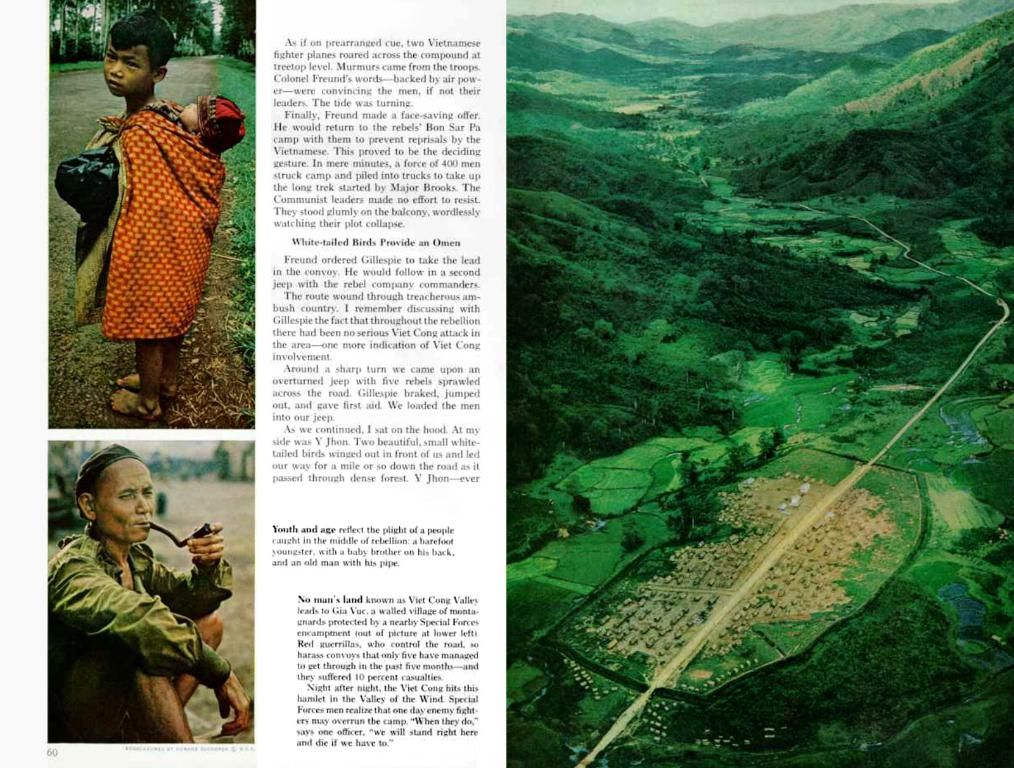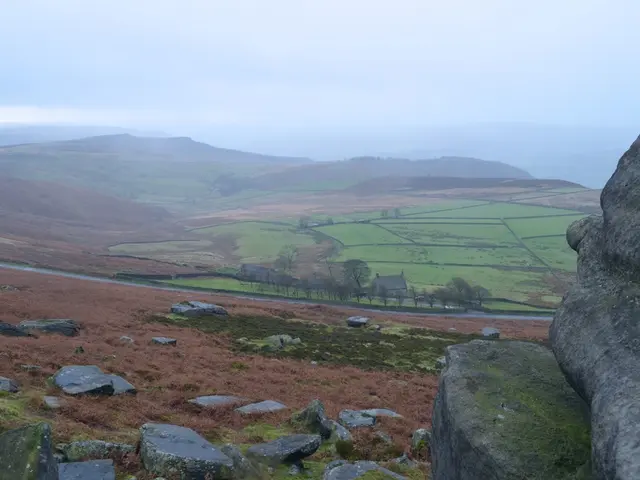Venerable Thapthim Shrine: An Ancient Retreat Facing Modern Perils
Unleashing the Heartbeat of Bangkok: A Journey Through the Chao Mae Thapthim Shrine
Nestled in the thrumming Saphan Luang district of Bangkok, just a stone's throw from Sam Yan, lies the awe-inspiring Chao Mae Thapthim Shrine, affectionately known as the Ah Ma Shrine. This over a century-old sanctuary doesn't merely stand as a religious haven; it serves as a pulsating throb of cultural identity, a beacon of devotion and an emblem of a spirited struggle against gentrification in the city.
Steeped in history and reverence for over 150 years, this sanctuary spanning centuries houses the venerated Chinese sea goddess, Mazu. The shrine has long been a spiritual haven for the Chinese-Thai community, renowned for bestowing blessings of safety, harmony, and prosperity.
Alongside spiritual sanctity, the shrine has been a social cornerstone, offering refuge during the Second World War and now serving as a gathering point and guardian of tradition for generations. One of the shrine's most intriguing features is its location on Chulalongkorn University's land, a prestigious academic institution in Thailand. Although the university has traditionally coexisted with the shrine, tension has arisen in recent years due to the university's urban development plans.
Chulalongkorn University has pitched the idea of moving the shrine close to Centenary Park, insisting that such a move would preserve the site while permitting land redevelopment. However, the proposal has met with strong opposition. The shrine's caretakers and local heritage activists argue that the proposed location lacks the spiritual ambience of the original site, amounting to stripping the shrine of its historical essence.
For many, relocating the shrine isn't merely a shift of address; it represents the erasure of deeply rooted cultural memory. The struggle to safeguard this shrine even inspired cinematic narratives, playing a prominent role in the 2023 Thai film The Last Breath of Sam Yan, a compelling tale that sheds light on urban displacement, identity, and the resilience of local heritage. This film served as a platform to elevate the issue on a national level.
Visiting the Chao Mae Thapthim Shrine offers a soul-stirring experience brimming with cultural enlightenment. Anchored in devotion and packed with historical tales, the shrine operates daily from 8:00 AM to 7:00 PM, mere steps from Sam Yan MRT Station (Exit 2) or a short motorcycle ride from National Stadium BTS Station.
In a Bangkok quickening its pace, the shrine stands as an eternal testament to the enduring power of community, faith, and tradition. Whether you pay a visit to make an offering or simply to listen, the Chao Mae Thapthim Shrine reminds us that some treasures are sacred, a beacon worth defending against the modernizing tide.
- TAGS
- Chulalongkorn University
- shrine
- Santuary
- Samyan
- Samyan Mitrtown
- Chulalongkorn
- Bangkok
- An Unsetting Dilemma: Thailand's Taxi Color Code Debate
- Foreign Ministry Confirms Electrical and Internet Cuts to Cambodia Remain
- Aranyaprathet Border Checkpoint Witnesses Morning Rush on Monday
- Embracing the Roots: Thailand's Central Herbal Raw Materials Market Opening
- Heavy Rains and Downpours Forecast Across Thailand from June 9-23
Enrichment Insights:
The Roots of Chao Mae Thapthim Shrine
Having seen the light of the world over 150 years ago, the Chao Mae Thapthim Shrine nestled in Bangkok's heart began as a sanctuary for the Chinese-Thai community, dedicated to the venerated Chinese goddess Mazu. The shrine's history binds past to present, providing spiritual solace, shelter, and a focal point for tradition, even during World War II.
The Hurting Debate: Relocation Dispute
The shrine's placement on the land owned by Chulalongkorn University has stoked controversy over recent urban development plans. University proposals to relocate the shrine to Centenary Park have encountered fierce opposition from the shrine's caretakers and heritage enthusiasts who argue that such a move would desecrate its historical essence and spiritual vibe. Their concerns echo the broader struggles against gentrification, preservation of cultural heritage amid urban development in the city.
- The Chao Mae Thapthim Shrine, a century-old spiritual haven in Bangkok's Saphan Luang district, not only serves as a religious sanctuary but also as a cultural beacon, embodying the Chinese-Thai community's devotion and spirit of resistance against gentrification.
- The shrine's proposed relocation by Chulalongkorn University to Centenary Park has sparked debates, with opponents arguing that the move would strip the shrine of its historical and spiritual ambience, amounting to the erasure of deeply rooted cultural memory.
- Visitors to the Chao Mae Thapthim Shrine can immerse themselves in its cultural enlightenment, intertwining devotion with historical tales, while supporting the preservation of local heritage in the face of modernizing forces.
- The Chao Mae Thapthim Shrine's struggle to safeguard its integrity has inspired a cinematic narrative, reinforcing the national conversation on urban displacement, identity, and the power of preserving cultural heritage.
- Anchored in both spiritual beliefs and cultural roots, the Chao Mae Thapthim Shrine serves as a testament to the enduring influence of community, faith, and tradition in Bangkok's dynamic urban landscape.








